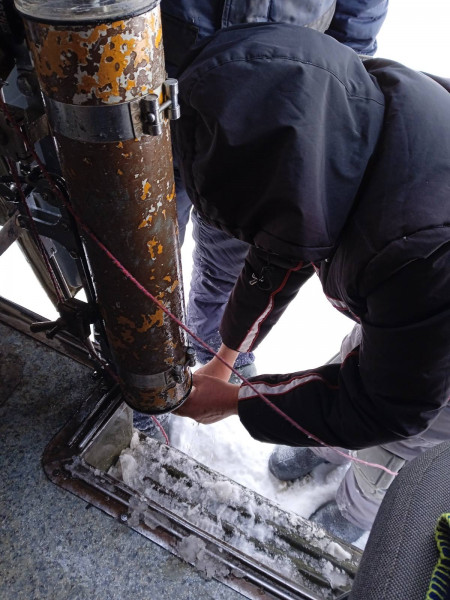Expedition to study the inflow transformation of the Verkhnyaya Angara River in the mouth area and in the Angara-Kichera shoals of Lake Baikal
A scientific-research expedition was studying the transformation of the inflow of the Verkhnyaya Angara River in the mouth area and in the Angara-Kichera shoals of Lake Baikal from 7 to 13 March 2023. Sampling of snow was carried out to assess the levels of accumulation of chemical components in the northern regions of the Baikal Natural Area (BNA).
The works were carried out as a part of the scope specified in the state assignment No. 0279-2021-0005 “The study of transformations of the state of East Siberian reservoirs and channels in seasonal and long-term aspects in the context of climate change, geological environment and anthropogenic impacts” (headed by A.P. Fedotov), No. 0279-2021-0014 “The study of the role of atmospheric precipitations and water-ground ecosystems of Lake Baikal, identification of air pollution sources” (headed by Khodzher T.V.), No. 0279-2022-0004 “Assessment of environmental and economic aspects of the impact on Lake Baikal in terms of ongoing and planned anthropogenic factors in the Baikal natural area, competent nature management, water and bioresource potential of Lake Baikal" (headed by Makarov M.M.).
The purpose of the work is to study the dynamics of the components of the water chemical composition in the tributaries of Northern Baikal during the winter period, to analyze the chemical composition of water and snow in the Angara-Kichera shoals, and to quantify the levels of accumulation of various chemical components in the snow cover.
Tasks of the expedition:
- Water and snow sampling in the lower reaches of the Verkhnyaya Angara River (settlement Verkhnyaya Zaimka), Kichera, Rel’ and Kholodnaya;
- Water (surface and benthic) and snow cover sampling in Angara-Kichera shoals at a distance of 0 km, 1 km, 2 km, 3 km, 4 km and 5 km from the Kichera break;
- Water sampling on the Tyya River above and below the Severobaikalsk sewage treatment plant discharge;
- Snow sampling along the Severobaikalsk-Ulkan-Zhigalovo route.
Expected results: quantitative and qualitative indicators of the water chemical composition of Northern Baikal tributaries will be determined; the distribution of the chemical runoff of the Verkhnyaya Angara River in the mixing area was studied; the supply of chemical compounds from the atmosphere to the northern basin of the lake during the winter period was assessed.









